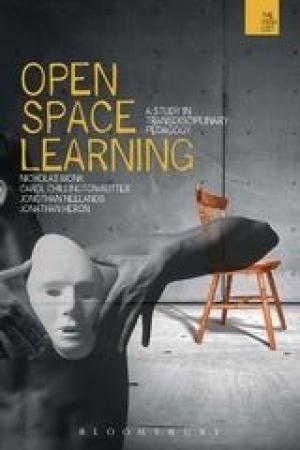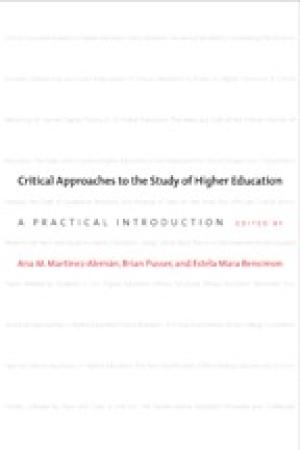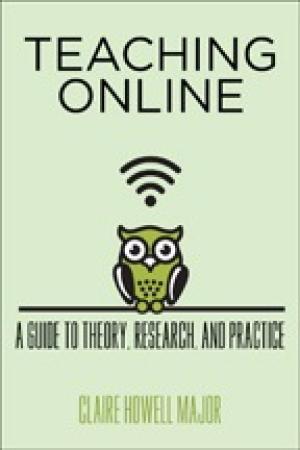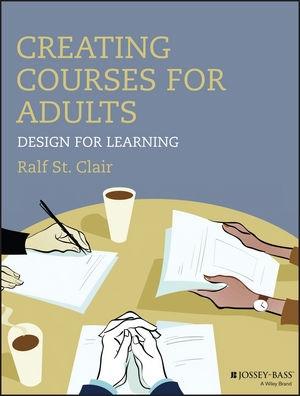Resources

This short, easy-to-read book may inspire academic administrators to set up one-on-one relationships between teachers with the goal of increasing effective technology use within classroom settings. The book may not translate directly to those teaching in theological education because it is drawn from the authors’ experiences in K-12 teacher education graduate programs. Its focus is on technology integration in elementary, and secondary contexts and teacher education, even though marketing copy on the back cover might indicate otherwise. Frequent clichés and repetitive text are also distracting. A major conceptual problem in this book is the use of the idea of “digital immigrants.” In the first chapter, Alaniz and Wilson describe current students who have grown up with the Internet as “digital natives.” Their parents’ generation, who did not grow up with the Internet, is one of “digital immigrants.” This generational understanding of technology adoption does not advance the aims of the book. Technology integration in the classroom requires skill in both technology and pedagogy. Generational age is not a good indicator for teachers’ capabilities in these areas. In the last chapter, the authors attempt to nuance the generational understanding, but it is too little, too late. Despite these problems, the book presents an appealing method of collegial coaching for improved technology integration in teaching. Alaniz and Wilson ground their methodology in education research on the value of collaboration and conclude the book with testimonial evidence of the effectiveness of collegial coaching. The heart of the book is a recipe for setting up a coaching program, supplemented by brief examples from graduate students who implemented programs in primary and secondary contexts. The steps for setting up this sort of program seem well-considered and backed by practical experience. While Alaniz and Wilson might have devoted more attention to intercultural issues in coaching relationships, they offer many helpful suggestions for considerations in selecting participants and structuring relationships. Shifting from one-size-fits-all workshop sessions on technology to more focused coaching on technology integration is a strategy that may benefit all levels of education, not just the primary and secondary levels. Theological educators could have ongoing structured peer relationships that focus on integrating technology and educational resources into a classroom setting. Educational technologists and librarians in theological settings might utilize principles of coaching to help faculty utilize their resources in the classroom. It would be interesting to see this recipe for collegial coaching adapted to a theological education context, with greater sensitivity to intercultural dynamics in the academy and more nuance about generational facility with technology. With noted cautions, this book is recommended for educators, particularly educational technologists, librarians, and deans, who might use insights from a peer coaching model to help faculty better use technology. 072016

Open-Space Learning (OSL), a “transdisciplinary pedagogy” as practiced at the University of Warwick, challenges assumptions about the boundaries of disciplinary knowledge, the organization of teaching spaces and resources, and the power arrangements that order the roles of teachers and students. This book bears witness to the efficacy of learning in spaces that assume students are engaged in embodied risk-taking, problem-based play, personal responsibility, group collaboration, and open-ended exploration within boundaries and expectations that yield demonstrated competence. The essential prefix for this learning space is “trans-”; it is asserted to be transgressive, transcendent, transitional, trans-rational, transactional, transdisciplinary, and transcultural. OSL draws from the learning theories of Boal, Freire, Vygotsky, Gardner, and Kolb and from the work of Clark and Damasio in neuroscience. In 2005 the University of Warwick received a grant from the Higher Education Funding Counsel of England to create its center for Creativity and Performance in Teaching and Learning (CAPITAL) in partnership with the Royal Shakespeare Company. Principles of theater pedagogy and performance studies opened new learning possibilities for disciplines not normally associated with embodied performance. The OSL website at the university notes collaborations between CAPITAL and students in business, chemistry, cultural studies, theater studies, philosophy, math, and psychiatry programs. The authors indicate that hundreds of students have been exposed to their learning pedagogies between 2007 and 2011. Four case studies create the backbone for the book. (1) An undergraduate module “without chairs” for literature majors brought twelve of Shakespeare’s plays to life and assessed student learning in comparison with students in the “with chairs” version of the module. (2) Law students argued cases found in four plays and analyzed their legal implications. (3) The learning gained by participants in the Certificate in Teaching Shakespeare program and the Postgraduate Award in Teaching Shakespeare for Actors is assessed using several measures. (4) Three “practice as research” projects focused on theatrical productions, practical workshops, and performance process for undergraduate students or post-graduates who were teaching Shakespeare. These studies provide descriptions and interpretations of the projects, but they do not offer much detail about the pedagogy’s methods for those without a theater background. The book publisher provides videos and outlines for specific OSL activities on its website. (I was not successful in getting a number of the links to work.) The OSL site at the University of Warwick provides similar links as well as some others. (This website has not been updated since fall 2013, which also raises questions about the current state of OSL at Warwick.) This book was published as a paperback in 2015. Open Space Learning reads like a report for university or funding organization officials. The authors give significant attention to student assessment of their learning and their performance on various required assignments. Classroom lectures and seminars, characterized negatively as contexts of “knowledge download,” were the dominant forms of teaching when CAPITAL began. OSL intentionally changes, at least in theory, the relationship between teachers and students, “dethroning” or “uncrowning” the power of the teacher that is reinforced by physical classroom spaces and presentation formats. I am not satisfied that the authors grappled with the power dynamics that remain present in OSL environments. While a teacher’s authority and expertise are expressed differently in the OSL context, teachers are still structuring the environment in which learning occurs. They are evaluating student work. They determine who passes or fails the modules. While teachers may have been “dethroned” from the traditionally hierarchical ways of exercising authority, they still have power, and perhaps disguised power, in the exploratory OSL context. The expressions of open space learning reported in this book depend heavily on the plays of Shakespeare. These applications of OSL for religious or theological educators are not immediately obvious, but imaginative teachers, especially those with a performing arts background, will draw inspiration from Open Space Learning and develop possibilities for performing the narrative-based texts from their disciplines in their teaching.

The goal of the contributors to Critical Approaches to the Study of Higher Education is to apply critical theories to the study of higher education which, they insist, “has only begun to develop research using such essential approaches as critical feminist theories, critical race theories, critical discourse analysis, state theoretical approaches, or theories of power and marginalization.” Added to this genuine concern is the scarcity of published material “addressing key topics in higher education that are central to critical work elsewhere in the social sciences” (5). To meet this need, they marshal “critical theories, models, and research tools with a critical vision of the central challenges facing postsecondary researchers” hoping to shape future “scholars and scholarship in higher education” (5). They are convinced that these critical tools will “provide policymakers, the public, and institutional actors clear, reasonable, and authoritative information about higher education as it is experienced in a democracy” (1). The result is a fine compilation of well-written essays for teachers and researchers to adopt and exercise their critical edge with a view to innovating their teaching pedagogies and research. The vision Mertínez-Ahlemán, Pusser, and Bensimon have is to ensure a sustained exercise of critical theory in the service of humanity, namely “for understanding politics and policy making in higher education” (5). They carry their readers through fifteen intriguing arguments critically testing theory against lived experiences filled with autobiographical elements that share the same thread – an abiding concern and determination to ensure that justice and equity are exercised in higher education. After all, critical theory came into being for this purpose as exemplified in feminist criticism, critical race theory, and other critical studies dealing with various dimensions of human life such as marginalization, economic disparity, and power differential. Simply stated, things are not the way they seem and something must be done even if it might be subversive. This volume is, indeed, “long overdue” (5) as it provides salient insights on how to critically navigate the host of complex and challenging issues facing higher education. These dynamic tensions inherent in higher education include: areas of scholarship and lived experience, power differential, critical historiography, the making of globalization, policymaking, race, equity, opportunities, and institutional change, and so on. Quite frankly, this book is a gem with a delicate vision to motivate scholars and teachers alike to engage in the noble – yet difficult – task of effecting change, especially the kind of transformation that advocates justice and nurtures equity in higher education. Educators and researchers may strive to embody and diligently exercise its content in their classrooms or writing projects because of its timely and urgent call for action. In other words, justice and equity matter (311).

Some higher education faculty might still be ambivalent about the long term impact on educational culture by the technological takeover, especially that this shift has taken place in a relatively short period of time. Few though would doubt the fact that we are in the midst of an innovative, technology driven, instructional change. Teaching Online’s main goal is to help us navigate this change. Based on ample research, the book argues that the change has reached a tipping point and is expanding. This is hardly surprising news. Taking some courses online during their program has become a common expectation of the current generation of students at seminaries and graduate schools of theology, not to mention the large increase in distance learning programs and enrollment. In addition to offering a comprehensive guide to the theory and practice of online teaching, Teaching Online also includes substantial chapters on developments in the theories and philosophy of education. This, in addition to situating teaching online within a long trajectory of change to instructional culture are among the key contributions of the book. Faculty views on learning change when they teach online, argues the chapter on “Views of Learning.” Higher education systems are facing new and significant challenges. “For hundreds of years, educators labored under the assumption that learning happened by way of an individual’s consumption of information and ideas.” Many philosophers of education, long before the time of online learning, starting with Paulo Freire in the 1960s, have challenged this view. However, the recent and widespread experience in online learning, which has now become mainstream, has clearly moved education beyond the traditional static concept. The difference is that this time the move to learner-centered educational systems is caused by technology. Online learning is offering the possibility of constructing ecosystems “in which each person is spreading his or her understanding among the pieces of information available in that ecosystem.” Students are becoming active agents in what one contributor to the book calls a “rhizomatic” learning process that has no fixed beginning or end, and is rather an ongoing experimentation and transformation (65-67). This is a great metaphor for theological education! Equally challenged by the spread of online learning are not only traditional philosophy and pedagogies, but also academic institutions themselves that might be losing control of the learning process (257). Teaching Online helps teachers tackle these changes and challenges. Furthermore, the chapters of Teaching Online offer valuable practical help in several key areas such as course structure and planning, the teacher’s persona in the online course, communication, student engagement and community of learning, and much more. One minor annoyance in the book is the format of the chapters. Most chapters include five or six page-long testimonies of professors sharing their experience on the topic of the chapter. While these are somewhat interesting and add information and liveliness to the book, because of the way they are inserted, they can be distracting and interrupt the flow of the chapter. One feels lost at times in trying to follow the flow of the chapter; perhaps the book is trying to implement the rhizomatic approach mentioned above! I was attracted to this book mainly because I am preparing to teach a totally online course for the first time, in the next academic year. I am glad I read it, and I strongly recommend it.

Mindful Teaching and Learning challenges educators to be attentive to their own self-knowledge and location in the classroom. Emphasizing a transdisciplinary approach, the authors articulate the value and effectiveness of mindfulness-based practices and the possible benefits for pedagogy and curriculum. The editor contends, “The content of this book examines ways in which to develop habits of mind, courses of action, as well as a curriculum of study that would support educators as they cultivate competencies for thriving and coping with the modern demands of being a teacher” (viii). The first three chapters draw on evidence-based research to argue for the value and effectiveness of mindfulness-based practices. Elizabeth R. Mackenzie assesses previous research across disciplines in order to craft a compelling foundation for the need for and benefits of mindfulness training for students and educators. Karen Ragoonaden draws on Eastern contemplative practices, indigenous wisdom, and mindfulness to demonstrate the positive impact of mindful practices on one’s personal and professional life. Through her self-study, Ragoonaden reveals the impact of mindfulness on educators and students. Kathryn Byrnes and Tom Bassarear provide pedagogical techniques to demonstrate the effectiveness of contemplative pedagogy. They discuss techniques that arise from their own contemplative practices and urge readers to similarly engage practices to be meaningfully incorporated into class sessions. The second portion of the book considers the implementation of mindfulness-based practices in leadership, curriculum, and field experiences. Sabre Cherkowski, Kelly Hanson, and Jennifer Kelly consider leadership as informed by mindfulness. Drawing on their own experiences in educational research, in leadership in a school district, and in the classroom, the authors articulate mindful leadership as being rooted in knowledge of oneself, assisting others to live and work better, and being nurtured in relationship with colleagues. Geoffrey Soloway draws on his qualitative research on mindfulness-based wellness education programs to offer insight into curriculum design and implementation. Significantly, he offers suggestions for how to assist students in drawing connections between mindfulness and their own lives. Margaret Macintyre Latta examines field experience for prospective teachers as an opportunity to attend to the relation between theory and practice in curriculum and to implement mindfulness in the classroom. Overall, the authors contribute to wider discussions in pedagogy as they question the goals of education and emphasize a holistic approach to the individual and learning in contrast to a dominant emphasis on content. Mindful Teaching and Learning challenges faculty to focus on the learning evident in the present moment. The chapters draw on a wide range of research and methodologies (self-studies and qualitative research). In particular the use of self-studies by several of the authors and reflections by educators on their own use of mindfulness encourage the reader to reflect on his or her own practices and the possible impact of mindfulness on an individual’s personal and professional life, pedagogy, and students.

Ralf St. Clair’s instructive book on designing courses will provide helpful guidance to new professors and a meaningful review to those seasoned in the classroom, along with some potentially new material for those veterans. Divided into ten well-defined chapters, Creating Courses for Adults walks readers through the learning theory associated with the adult student population, as well as the practical logistics of designing different kinds of courses for different adult populations. The array of courses discussed range from online for credit instruction to non-credit onsite education for trade school students. Taking seriously the role and the needs of the professor and not just the students, St. Clair begins with a welcomed and affirming chapter, “All About You,” which includes a very helpful section entitled, “Why Who You Are and What You’ve Done Matters.” While this book accepts that teaching is about the students, the author accepts the often unappreciated fact that teaching is also about the needs of the professors, who feel a sense of vocation to this work. St. Clair operates out of the helpful notion that “nobody is an intuitive or completely natural teacher” (page xii), a claim that will challenge seasoned instructors to continue to plan and will encourage new professors with their often unarticulated sense of intimidation. Several chapters are especially rich in what they provide the planning process. Chapter three, “Context Drives Design,” makes distinctions among formal learning, non-formal learning, and informal learning. Adult learners may bring previous experience in formal learning to the classroom, since formal learning is education that leads to a diploma or certificate. They will certainly bring experience in non-formal learning, such as that experienced in an open-ended group, and informal learning, which refers to learning achieved through everyday activities. In fact, the latter two learning experiences can so shape the approach to education of adult learners that it becomes difficult for them to embrace a world of formal learning, even if it is adult-education friendly. For this reason, teachers must give some thought in course design to preparing students for the particular educational context that the course provides. St. Clair also offers helpful approaches to online learning. In addition to a useful bibliography of online course design material, St. Clair proposes that design issues in online education do not fundamentally differ from onsite education. Citing current literature that explains online course design, St. Clair concludes that the best literature provides questions for online course design that do not substantially differ from face-to-face education. While acknowledging that his conclusion will not be universally accepted, St. Clair nonetheless provides an affirmation that online education can be informed by the same theoretical approaches that guide other forms of education. Readers wanting an accessible approach to course design, grounded in both theory and application, will find St. Clair’s Creating Courses for Adults to be valuable. The book belongs in the collection of any teaching and learning center of higher education for its content and its current bibliography.

Eren Tasar Assistant Professor University of North Carolina at Chapel Hill As a trend in twentieth-century world history, decolonization is a major topic in any class dealing with modern Muslim societies. This mundane fact comes as a surprise to some of my students, however, for reasons that I can illustrate.

Nancy Lynne Westfield Associate Professor of Religious Education Drew Theological School It is a challenge to do what you teach. “If you know these things happy are ye if you do them.” (John 13:17, King James Version – or the version of my childhood bible study) - my grandfather’s favorite.
[row] [column lg="12" md="12" sm="12" xs="12" ] [su_heading]This information is for participants already accepted into the workshop.[/su_heading] [/column] [/row] [row] [column lg="4" md="4" sm="12" xs="12" ] [su_button url="http://live-wabash.pantheonsite.io/programs/workshops-home/2016-17-early-career-theological-school-faculty/" background="#86b53e" size="3" wide="yes" center="yes" radius="5" text_shadow="0px 0px 0px #FFF" desc="Participants, Other Dates, etc..."]View Info About This Workshop[/su_button] [/column] [column lg="4" md="4" sm="12" xs="12" ] [su_button url="http://live-wabash.pantheonsite.io/programs/workshops-home/travel-and-accommodations/" background="#86b53e" size="3" wide="yes" center="yes" radius="5" text_shadow="0px 0px 0px #FFF" desc="Flights, Lodging, Directions, etc..."]Info on Travel and Accomodations[/su_button] [/column] [column lg="4" md="4" sm="12" xs="12" ] [su_button url="http://live-wabash.pantheonsite.io/programs/workshops-home/policy-on-full-participation/" background="#86b53e" size="3" wide="yes" center="yes" radius="5" text_shadow="0px 0px 0px #FFF" desc="Attendance, Guests, Dependent Children, etc..."]View Our Policy on Full Participation[/su_button] [/column] [/row][row] [column lg="12" md="12" sm="12" xs="12" ]Ground TransportationAbout a week prior to your travel you will receive an email from Trish Overpeck (overpecp@wabash.edu) with airport shuttle information (pdf). This email includes the cell phone number of your driver, where to meet, and fellow participants with arrival times. Please print off these instructions and carry them with you.[/column] [/row]

Caleb Elfenbein Assistant Professor Grinnell College The core learning goal of my introduction to Islam is that “Islam” is not a thing. Islam does not say anything. Islam does not do anything. Islam holds no power over anyone. Given the incredible diversity across time and space that marks the practices
Wabash Center Staff Contact
Sarah Farmer, Ph.D
Associate Director
Wabash Center
farmers@wabash.edu